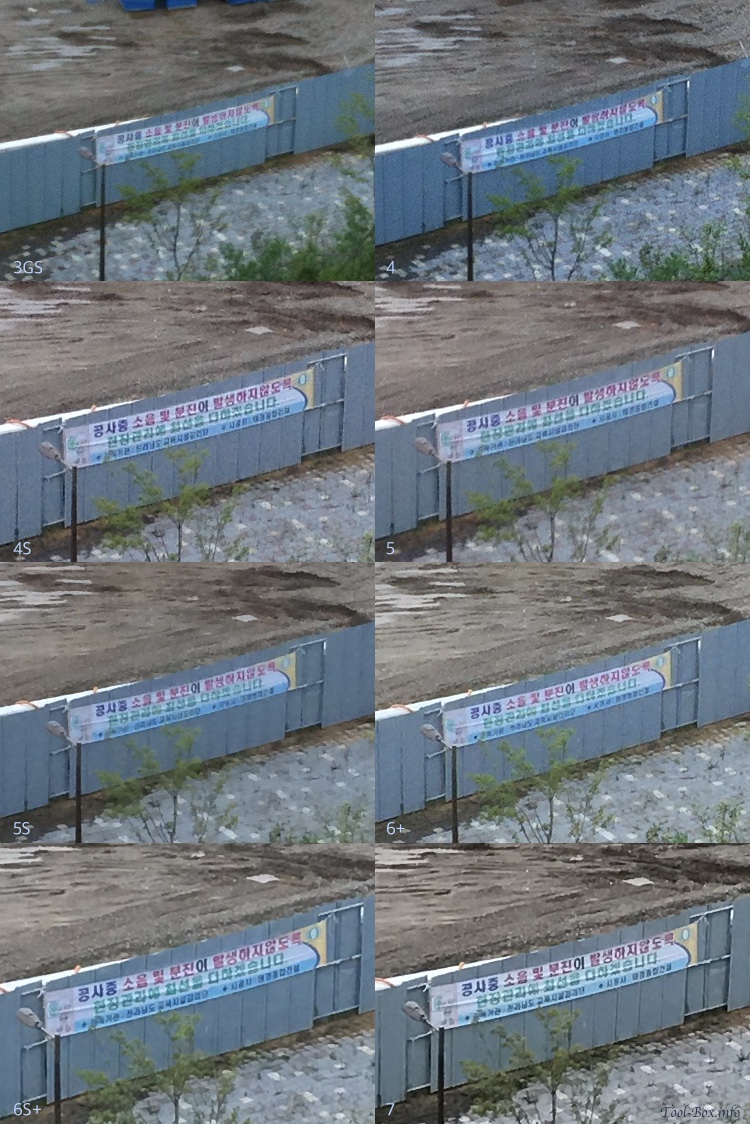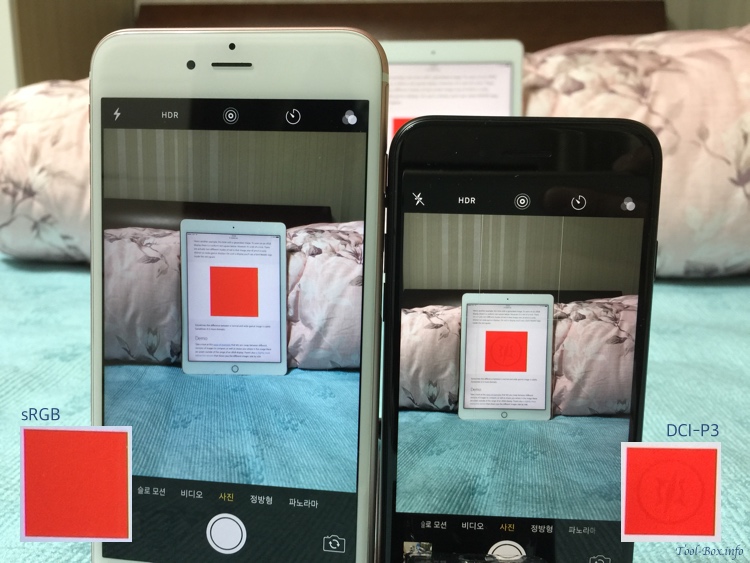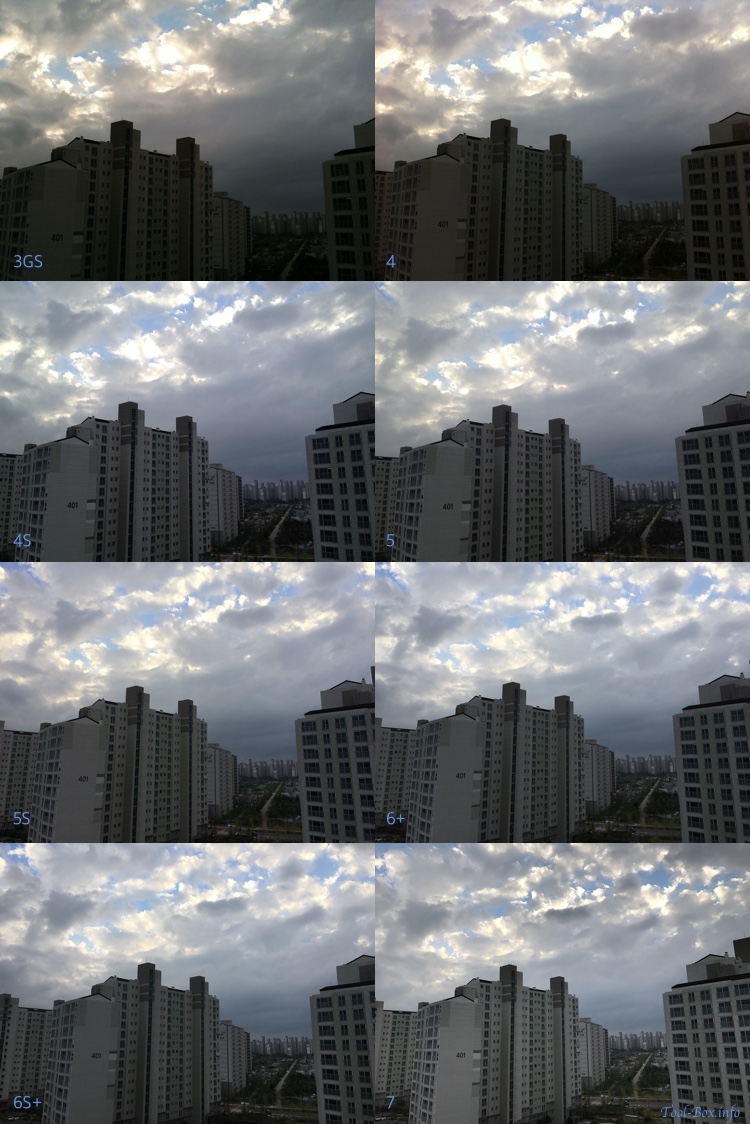Comparing iPhone 7 camera with older gen (Outdoors)
Posted by Wesley onIt is pretty safe to assume that the latest iPhone has the best camera in general. The tradition continues with iPhone 7, which allows me to take impressive photos like the one you see here. But to truly appreciate the improvements, a good round of comparison is in order.
First, let's look at the basic specifications as reported by the EXIF data. For the rear camera, we have these values:
| Device | Focal Length (mm) |
35mm Equiv. (mm) |
Aperture (f/x) |
Resolution (px) |
|---|---|---|---|---|
| iPhone 7 | 3.99 | 28 | 1.8 | 4032x3024 |
| iPhone 6S+ | 4.15 | 29 | 2.2 | 4032x3024 |
| iPhone 6+ | 4.15 | 29 | 2.2 | 3264x2448 |
| iPhone 5S | 4.15 | 29 | 2.2 | 3264x2448 |
| iPhone 5 | 4.12 | 33 | 2.4 | 3264x2448 |
| iPhone 4S | 4.28 | 35 | 2.4 | 3264x2448 |
| iPhone 4 | 3.85 | 35 | 2.8 | 2592x1936 |
| iPhone 3GS | 3.85 | 35 | 2.8 | 2048x1536 |
And for the front camera:
| Device | Focal Length (mm) |
35mm Equiv. (mm) |
Aperture (f/x) |
Resolution (px) |
|---|---|---|---|---|
| iPhone 7 | 2.87 | 32 | 2.2 | 3088x2320 |
| iPhone 6S+ | 2.65 | 31 | 2.2 | 2576x1932 |
| iPhone 6+ | 2.65 | 31 | 2.2 | 1280x960 |
| iPhone 5S | 2.15 | 31 | 2.4 | 1280x960 |
| iPhone 5 | 2.18 | 35 | 2.4 | 1280x960 |
| iPhone 4S | 1.85 | 35 | 2.4 | 640x480 |
| iPhone 4 | 3.85 | 35 | 2.4 | 640x480 |
iPhone 6S Plus (left) can capture and display in sRGB colour space only, while iPhone 7 (right) can do both in a wider DCI-P3 colour space
To illustrate the difference in the colour space, WebKit Blog prepared an interesting sample file. The faint WebKit logo inside a red box is only visible on the DCI-P3 capable display. Most regular displays don't have enough "range" of colours to show the difference. Luckily, I happen to have two devices with DCI-P3 support - iPad Pro 9.7" and iPhone 7 - so I put it up on the iPad. The setup above shows the iPhone 6S Plus unable to see the logo, while the iPhone 7 does. This extra capability should allow the iPhone 7 to capture and display photos in a richer and more accurate manner.
With that out of the way, let's first look at a view outside with the Sun just obscured behind the cloudy sky. This type of scene is hard on the camera because of the wide range of brightness it needs to cover. This can sometimes be overcome with the HDR (High Dynamic Range) function, but I wanted to see how well it did without resorting to this. All the photos were shot with the default metering mode (i.e. did not touch the screen to adjust focus and exposure).
| Original Photo | ISO | Shutter Speed |
|---|---|---|
| iPhone 7 | 20 | 1/1088 |
| iPhone 6S+ | 25 | 1/620 |
| iPhone 6+ | 32 | 1/791 |
| iPhone 5S | 32 | 1/933 |
| iPhone 5 | 50 | 1/847 |
| iPhone 4S | 50 | 1/587 |
| iPhone 4 | 80 | 1/450 |
| iPhone 3GS | 64 | 1/588 |
Looking at how the clouds are depicted and how evenly lit the whole scene is, we can see the evolution of the iPhone cameras. 3GS and 4 was unremarkable, but starting from 4S, which was the first model to have an 8-megapixel camera, things got noticeably better. Then we see gradual improvements up to 6S Plus. Finally, 7 makes another leap - buildings are bright, yet the clouds are more detailed than ever. Older models look washed out in comparison.

Clarity (rear camera) - iPhone 3GS, 4, 4S, 5, 5S, 6 Plus, 6S Plus, and 7
| Original Photo | ISO | Shutter Speed |
|---|---|---|
| iPhone 7 | 25 | 1/40 |
| iPhone 6S+ | 32 | 1/30 |
| iPhone 6+ | 32 | 1/30 |
| iPhone 5S | 32 | 1/30 |
| iPhone 5 | 50 | 1/30 |
| iPhone 4S | 64 | 1/40 |
| iPhone 4 | 80 | 1/24 |
| iPhone 3GS | 80 | 1/24 |
As for how clear and sharp the cameras take the photo, these crops at the native resolution tell the tale. Looking at both the letters on the banner as well as the ground, the 4S again set the bar for the baseline quality. The best results come from 6 Plus or later models.
Now that we've seen how the rear camera fares outside, let's move to the front camera. Included since iPhone 4, this is predominantly used for selfies (self portraits) so one can assume it's optimized for objects closer to the camera. I suppose this is why it got away with having such low resolution for a long time (1.2-megapixel camera on a high-end smartphone in 2014?). But what if it's used to take landscape photos?

Clarity (front camera) - iPhone 4, 4S, 5, 5S, 6 Plus, 6S Plus, and 7 vs. iPhone 5S rear camera
| Original Photo | ISO | Shutter Speed |
|---|---|---|
| iPhone 7 | 25 | 1/285 |
| iPhone 6S+ | 32 | 1/525 |
| iPhone 6+ | 32 | 1/529 |
| iPhone 5S | 50 | 1/299 |
| iPhone 5 | 32 | 1/287 |
| iPhone 4S | 125 | 1/1138 |
| iPhone 4 | 125 | 1/938 |
Perhaps it was expected, but they are no match for the rear cameras. Anything before 6S Plus had too low a resolution, and even when the resolution was bumped up in 6S Plus and 7, it's still not as sharp as using the rear camera, despite making them focus on the banner specifically. It seems that the optics aren't suited for this kind of use. Indoor and close-up photography may have a different outcome, though. I'll be dealing with them in the next post.
Defined tags for this entry: camera, iPhone 3GS, iPhone 4, iPhone 4S, iPhone 5, iPhone 5S, iPhone 6 Plus, iPhone 6+, iPhone 6S Plus, iPhone 7


